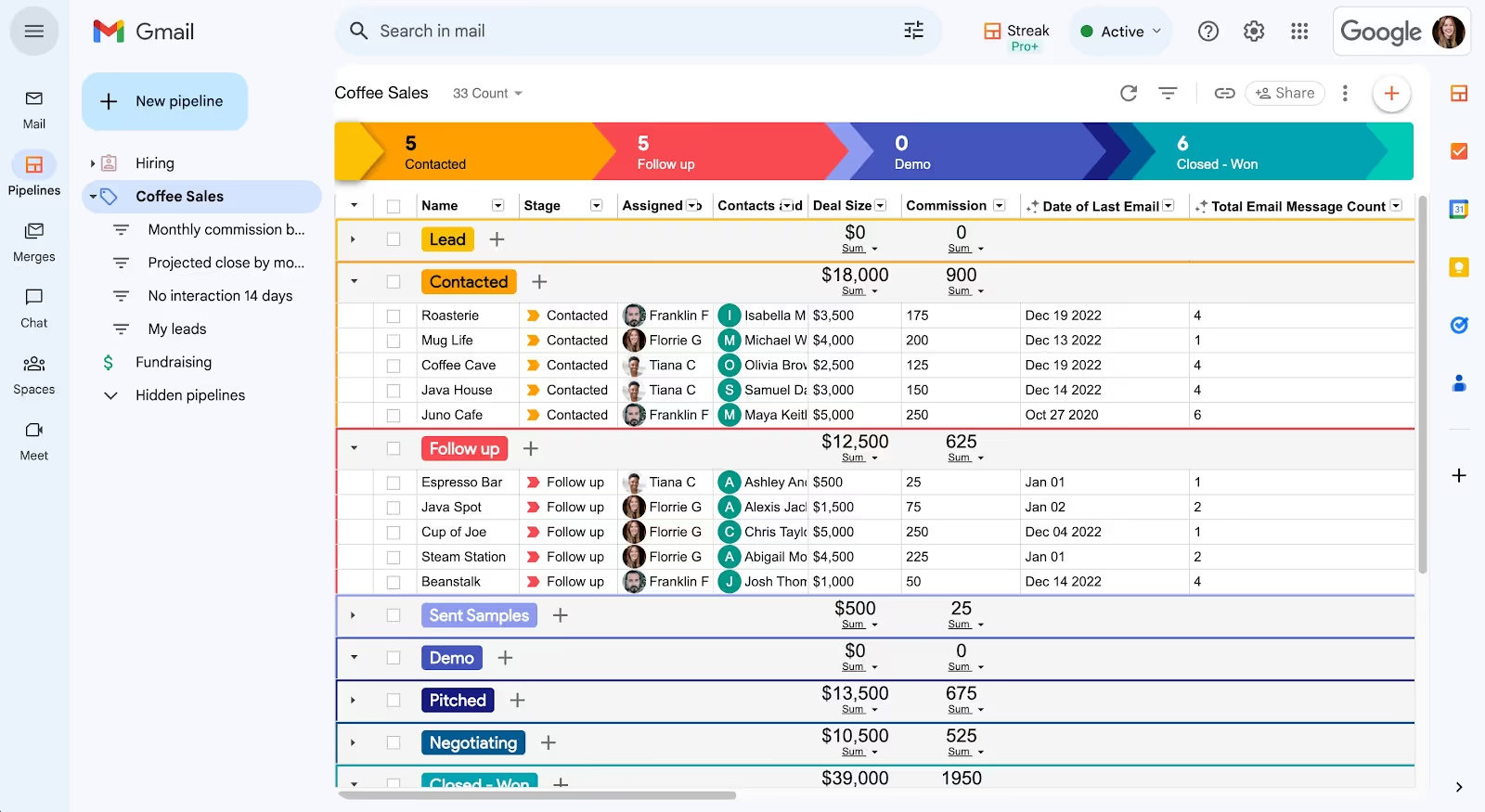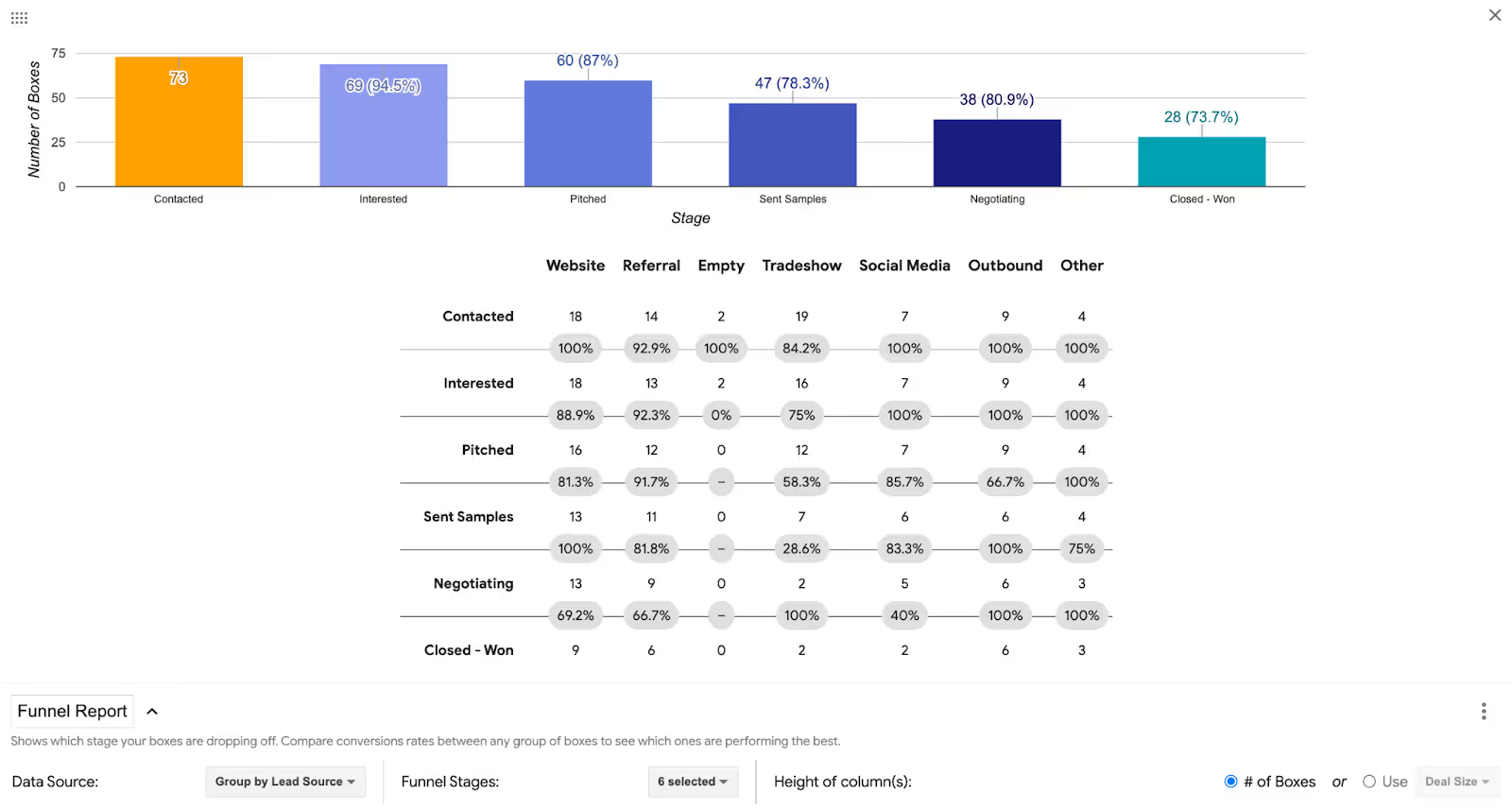The 105 most common sales terms explained
New to sales? You’ll need to know this jargon. Here are 105 of the most common sales terms and acronyms in the industry.
A sales pitch is a brief and persuasive presentation designed to convince someone to buy a product or service. It typically highlights the benefits and value proposition in a clear and compelling manner.
In the business world, this usually means a transactional sale — but we’re all engaged in sales pitches, whether it’s getting a first date or persuading someone about your sports opinion.
While sales pitches can range from the prototypical “elevator pitch” to hour-plus in-person meetings with a roomful of heavy hitters, the basics remain the same: convince the audience that you have a solution to their urgent problem.
A great salesperson can tailor their sales pitch to directly target the listener’s problem. They do this by creating emotion, customizing their message, and providing proof that what they’re selling is exactly what the listener needs.
<a href="#elements-of-a-great-sales-pitch" class="anchor-link">Elements of a great sales pitch</a>
<a href="#types-of-sales-pitches" class="anchor-link">Types of sales pitches</a>
<a href="#sales-pitch-best-practices" class="anchor-link">Sales pitch best practices</a>
<a href="#increase-sales-with-streak" class="anchor-link">Increase sales with Streak</a>
<div class="anchor-wrapper"><div id="elements-of-a-great-sales-pitch" class="anchor-target"></div></div>
No matter the length of your presentation, there are a few tried-and-true staples that can help you make a compelling case.
The first step is obvious: tell them who you are, but do it quickly. People are trained to spot a sales pitch from a mile away, so you’ll want to get to the point.
For the sake of time, it’s a good idea to just say your name, but don’t mention the name of your company (unless you have a good reason to do so).
This step can be as quick as:
“Hey, I’m John” — and then move on. People rarely remember the name of your company up front, and only care once they’re further down the buying process.
After you introduce yourself, transition to talking about them as quickly as possible! Try summarizing the biggest benefit that your company provides, and then frame it about them, not you.
For example, let’s say you’re selling HR software. The product is feature-rich, but turn the focus back to them:
“We make HR simple with a single easy-to-use platform that’ll save you time, money, and headaches.”
Half the battle of a great sales pitch is your ability to explain the audience’s problem. If you can articulate their pain better than they can, they’ll believe that you have the solution.
Depending on the type of pitch, exploring their problem in the form of a story or analogy can drive the point home. If you only have a few seconds, consider using a short analogy or jumping right into describing the issue.
For example, let’s say that you sell real estate coaching:
“So John, let’s say that I drop you in the middle of unfamiliar woods without a map — would you be able to find your way out? Now let’s say that I send a guide with you, someone who’s lived there for years and knows every tree and path. Would that make things easier?”
New salespeople often end their pitches with wishy-washy calls to action. They let the listener off the hook by not pushing for a direct answer.
You could say something as simple as:
“So John, are you ready to get started?”
In many cases, they’ll still have other questions or comments. A good salesperson will repeat their close until they get a firm answer.
<div class="anchor-wrapper"><div id="types-of-sales-pitches" class="anchor-target"></div></div>
The mode of communication ends up being the greatest dictator of your sales pitch. You’re going to treat the situation differently on a cold call than you would after being invited to an office for a 30-minute presentation.
Based on how many cold emails we all receive - and ignore - daily, it may seem like an inefficient method for sales pitches. After all, how are you going to cut through the noise with your message?
The key is writing an effective cold email to make sure your message doesn’t get moved to trash (or even worse, spam) before it gets a chance at being read.
Your email copy should change based on how desirable your offer is likely to be to your target. If you’re offering to buy ad space on someone’s website, that can be a short message with a high chance of response.
If you’re trying to sell software to a dental company, you’ll have to try a different tactic. The best piece of advice is to not sound salesy. Talk like you’re talking to a real person — words like tactical, deploy, strategic, efficient, and others just raise alarm bells.
Need help writing sales and business development emails? Start with email templates or use AI to help you craft the perfect cold email.
In most cases, you’re dealing with someone predisposed to want to hang up on you. So get into your pitch quickly and immediately provide them a reason to want to know more. Also, since cold calling is a numbers game, give them a chance to respond early so you can move forward or move on.
“Hi John, my name is Joe, and I’m guessing that one of your challenges is XYZ. We help companies just like yours to ABC.
Is this something that you’re interested in discussing further?”
This sounds simple, but the secret to making this work is a total understanding of their challenges and how you can solve them. Make sure to research sales prospects before a call so you can tailor your pitch to their specific needs and problems.
Whether you’re rubbing elbows at a networking event or in a literal elevator with a company CEO, honing your quick pitch can pay dividends.
You can expound a bit more than in a cold call, but this is still a shortened version that needs to pack a punch.
The beauty of something so short is that you can write it out and practice beforehand. Even if you never actually give a 30-second pitch, you’ll still be a better salesperson because of it.
This is the dream for most salespeople, as you get to dive into your pitch fully. You’ll get to research the company beforehand, polish up the slide deck, and have a legitimate conversation with Q&A at the end.
Be sure to spend much of your additional time hammering home their pain points and sharing big wins other clients have had.
<div class="anchor-wrapper"><div id="sales-pitch-best-practices" class="anchor-target"></div></div>
No matter the type of pitch you’re giving, there are a few strategies that will give you the best chance of closing.
It’s a no-brainer to dive deep into the company before a big pitch, but what about in a cold call? In many cases, you’ll have their name, so always use that.
In addition, you can ask them a quick question that you can use to tailor the pitch. For example, if you know that your cold call list includes small business owners, try this:
“John, if you don’t mind me asking, what is it you sell?”
“Construction equipment.”
“Oh great, we’ve helped plenty of other construction manufacturers significantly increase sales. In fact, what we do really makes sense in your industry because….”
Asking great discovery questions not only helps you hone in on your prospect’s pain points, but can also help get everybody in agreement during your sales pitch.
Rather than phrasing a benefit as a statement, turn it into a question. Instead of saying:
“Our software will save you money.”
Try this:
“Does it sound like using this software would save you money?”
Aim to get plenty of “yes” answers from your listeners, as setting them up to respond positively at each step gets them thinking positively about your offer as a whole.
This is the time-tested copywriting technique that lends itself to sales as well. As Zig Ziglar once said, “People don’t buy drills, they buy holes.”
If you’re selling a pencil, don’t sell your listener on the shape of the pencil or the special type of graphite it uses. Sell them on how it feels great in your hand and writes smoother than anything else on the market.
If possible, never end your time with an audience without getting a firm answer or next step. Pushing until you get a “yes” or a “no” is the obvious best response.
Of course, things don’t always work that smoothly, and many people will put contingencies on giving you a firm answer.
For example, many will say they need to talk to someone in authority before they can move forward. You could respond with:
“If your wife/CEO/manager agrees, would you be good to move forward?”
This way, you’ll not only have a better idea of their mindset but also condition them to advocate for your product to the decision-maker.
<div class="anchor-wrapper"><div id="increase-sales-with-streak" class="anchor-target"></div></div>
Streak is a CRM designed to help you track and improve your sales right inside Gmail.

With Streak’s funnel reports, you’ll see exactly where leads are dropping off in your customer journey. Armed with this information, you can adjust your outreach, pitch, and negotiation strategy.

Streak allows you to easily track link clicks, email opens, deal progression, pipelines, and more — right inside Gmail. More than 750k+ people across the globe use Streak to manage their VC firms, start-ups, growing businesses, and everything in between.
